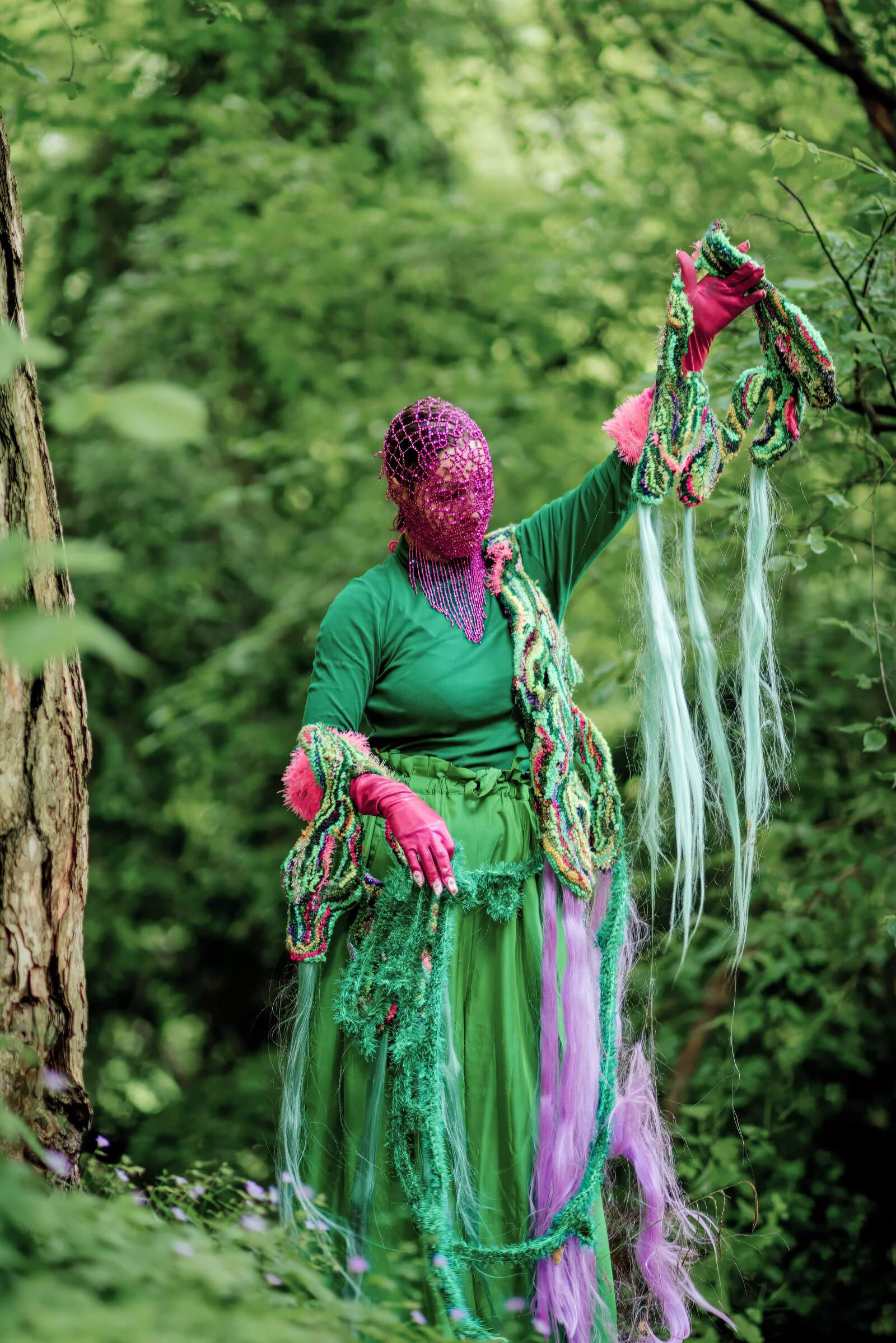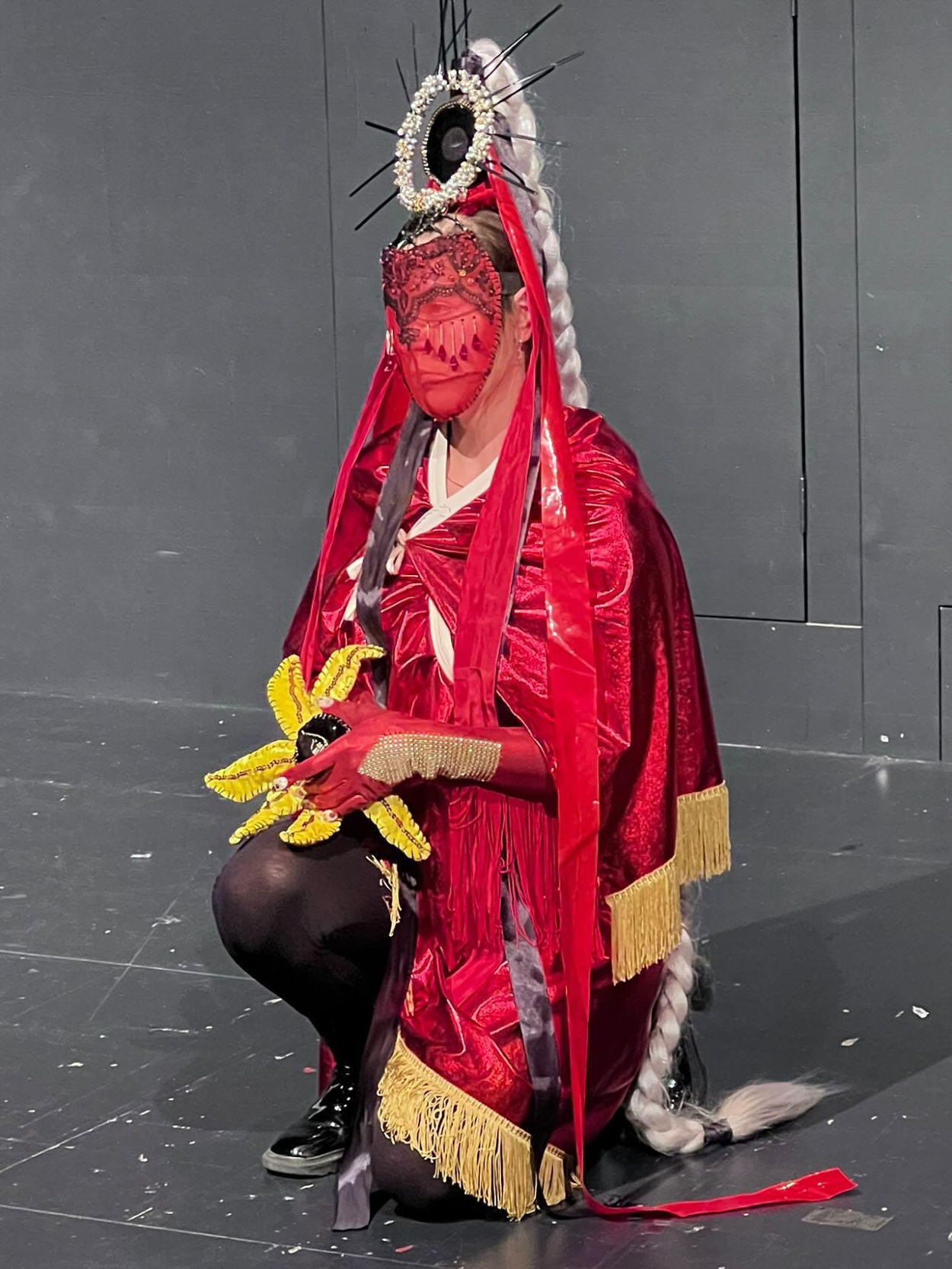Nika TImashkova is a Basel-based artist whose practice spans performance, installation, costume design, and video. Born in Ukraine, Nika moved to Switzerland at the age of nine. Growing up between two countries, Nika’s life and work are shaped by multiple languages, fluid borders, and intertwined cultures. Inspired by theories showing that language shapes reality, her work investigates the space between perception and articulation—between what is and what could be. She focuses on dissolving symbols of borders to challenge nationalism, capitalism, and the effects of memory.
IMATELIER: Nika, I have been following your practice for several years, but this is my first time visiting your studio in Basel. How long have you been here? What do you enjoy most about your studio?
NIKA: I have worked in this building, close to the German railway station, for more than six years. It began as a sublet, just for one year, and now we have a contract until 2027.
IMATELIER: You work with textile installations as well as performance — they are clearly connected through your expressive use of color and a distinctive visual language. Could you please tell us more about your work?
NIKA: I use various media in my artistic practice, like installation, video, and performance. When I was a teenager, I first wanted to do photography, then fashion design, and then art. Maybe this is why I always integrate various media in my work. Also, I find inspiration not only in art, but also in fashion and advertisement. What I like to do in my work is to transform my own work from one medium into another and then see how it influences the piece. For example, I have made costumes for a photographic series. Afterwards, I did a performance with them, and this gave me another view on my own work.
IMATELIER: What about the themes? Are there recurring ideas or topics that you find yourself returning to?
NIKA: I have several topics that I am interested in and that are always coming back in my work. I am very interested in how cultural and gender identity are constructed in relation to textiles. Also, how in different contexts specific identities have shaped my experiences and those of other women and queer people. I work research-based and focus on historical events or people and see how these are connected to today’s struggles for equality. For one project, I researched female goddesses in different cultures and their transformation from a positive perception into a negative one, just because they were female. In another project, I focused on factory homes in Switzerland, where poor underage women were locked up because they “misbehaved.” In these projects, and in many others that I did, I connect past struggles of women to current struggles in capitalist and patriarchal structures. So, in a way, I research the past in order to understand the present.


From the prformances Bodies Of Nature (2025) & Good Byes.Bad Byes (2023).
Photo courtesy of the artist.
Photo courtesy of the artist.
IMATELIER: So interesting — it sounds like a deep dive! How do you usually approach a new idea? Do you tend to focus on one thing for a while, or do you prefer juggling several projects at once?
NIKA: Sometimes I want to work with a new medium for a while, but don’t have the equipment or knowledge. Sometimes there is a coincidence. I wanted to do tufting for a while, but was not sure if I would like it and whether it’s worth buying all the material. Then I met an artist who had the machine and gave me a quick class. And this is how I started tufting one year ago. As I work on various projects at the same time, that all have other timelines, I also use various media at once.
IMATELIER: What keeps you motivated during challenging moments in your work? What are your challenges?
NIKA: What keeps me going is friends, good talks, good food, also movies and books. In challenging times I try to exchange with other artists who have more experience in order to better understand the situation I am in. Often it helps me to hear from others how they have dealt with similar situations.
IMATELIER: Thank you, Nika! To wrap up, what are the greatest joys of being an artist and doing what you do?
NIKA: The best moments are when you as an artist get to meet new people and enter places that are usually not open to the public or are only accessible to specialists in the field. I am thinking for example about the residency I did in the Villa Clavel, a former summerhouse of a textile chemist or a dinner at the swiss ambassador's house in Sofia. As an artist you can enter these places and have an outside perspective. Also when traveling for projects you are not a local, but also not a tourist. Something in between. I like that position!
24/07/2025
